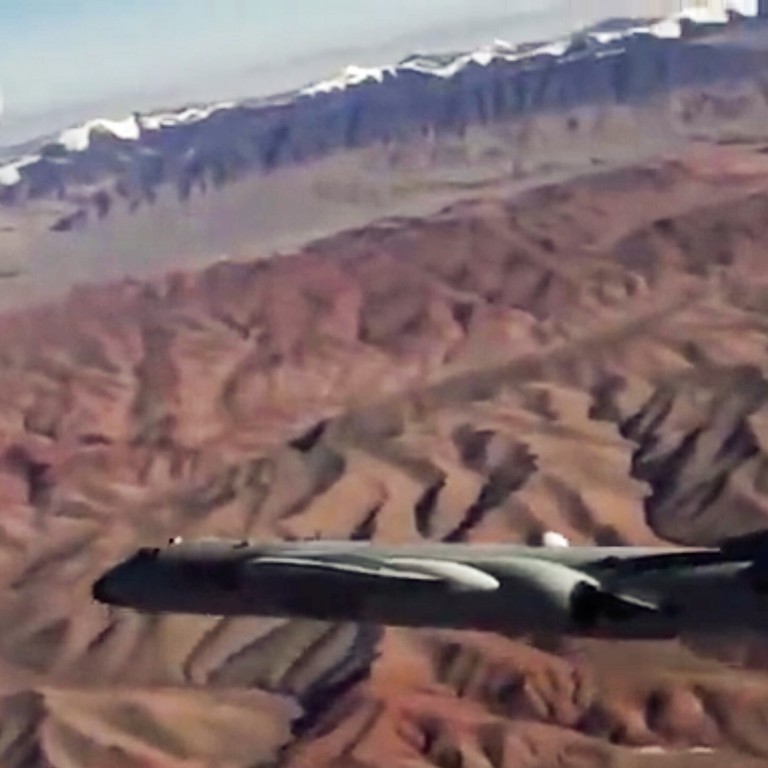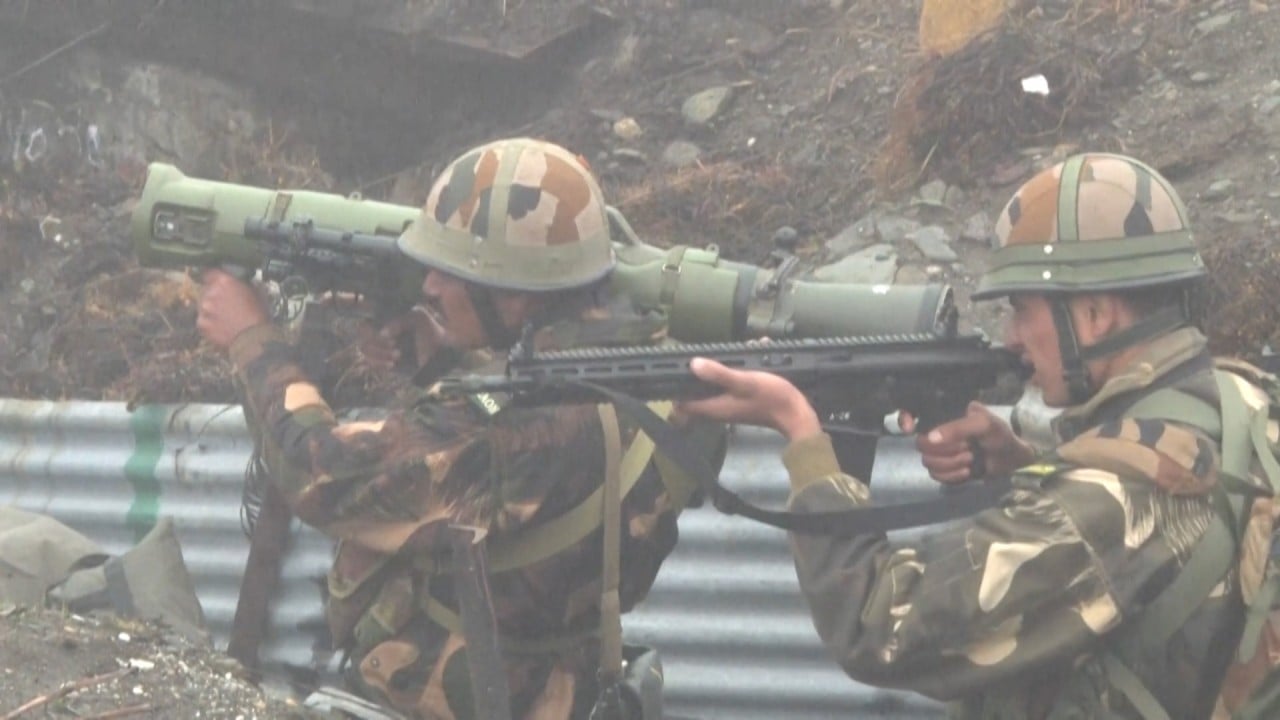
China sends long-range bomber to border with India
- Footage broadcast on CCTV shows H-6K on flight to mountainous region
- Images calibrated to send warning to ease tensions, analyst says
To mark the PLA Air Force’s 72nd anniversary on November 11, state broadcaster China Central Television aired footage that included a brief shot of an H-6K flying over a mountain range, indicating the aircraft had been sent to the Himalayas.
The aircraft was armed with short-range KD-63 missiles – and not the long-range CJ-20 cruise missiles that it is also designed to carry.
“It’s very easy for the PLA to fly H-6Ks to the China-India border, because the aircraft are stationed ... under the Western Theatre Command,” the source said.
Chinese military steps up night drills and brings in more advanced equipment close to Indian border
With a combat range of more than 3,500km (2,200 miles), the H-6K is designed to carry long-range CJ-20 cruise missiles for attacks on land and sea targets as well as short-range missiles like the KD-63.
Macau-based military observer Antony Wong Tong said the apparent deployment was “definitely a warning to India”.
“New Delhi is within the combat range of the H-6K and the striking range of the CJ-20,” Wong said.
But military commentator Song Zhongping said the PLA was focused less on the Indian capital and more on the country’s airbases, missile launch sites and other military posts near the borders.
“China will not attack civilian areas, so Delhi will not be targeted by air-launched missiles even though the capital is quite close to the border,” said Song, a former PLA artillery corps instructor.

03:44
India ramps up defences on Himalayan border after deadly clashes with China
Zhou Chenming, a researcher from the Yuan Wang military science and technology institute in Beijing, said it was notable that the CCTV footage did not include images of the long-range CJ-20s.
“It’s a careful warning from the PLA. The CCTV [report] deliberately did not include footage of the H-6K with powerful CJ-20,” Zhou said.
“China hopes the border conflicts will not escalate further, with the coronavirus pandemic expected to worsen this winter.”
China-India border dispute: defence chief says Beijing is New Delhi’s ‘biggest security threat’
In response to the PLA deployment, the Indian Air Force sent Mig-29UPG and Su-30MKI fighter jets to their frontline airbases in Ladakh, Sikkim and Arunachal Pradesh, the three key contested areas along the two countries’ disputed border, the Line of Actual Control (LAC), according to Indian media reports.

